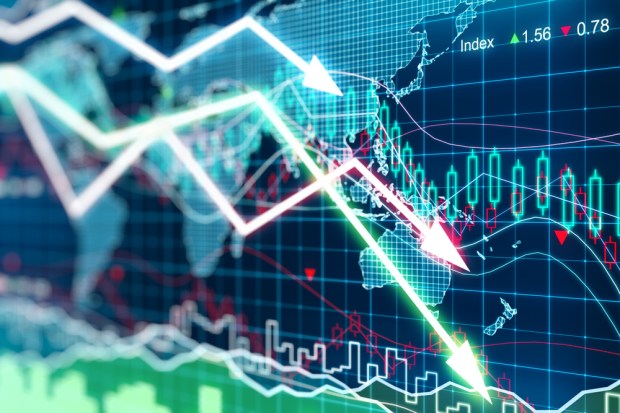Corporate Debt Has A Bad Side

Corporate debt is putting pressure on some of the world’s largest markets. This year, reports have surfaced regarding growing concerns over the rising level of bad business loans in the world’s two largest economies: China and the U.S.
Last April, analysts found a 67 percent increase in the instance of bad corporate loans across the three largest U.S. banks — Bank of America, JPMorgan Chase and Wells Fargo.
Meanwhile, in China, the International Monetary Fund has begun sounding the alarms over corporate debt, calling it “a key fault line in the Chinese economy” last month. Analysts say the nation is facing a 10-year high of bad corporate loans.
Of course, these statistics don’t paint the whole picture of the state of corporate debt in the world. This week’s Data Digest examines the latest data on corporate debt, bad and good, across geographical markets and across company size.
$70 billion in debts are threatening to cripple Puerto Rico, the result of the government borrowing to keep its state-run businesses afloat, among other factors. According to Puerto Rico Governor Alejandro García Padilla, indebted businesses can no longer afford to pay their suppliers, with supplier payables reaching $2 billion, forcing a sharp decline in commercial credit and forcing companies to pay for their goods and services on delivery. The island’s debt crisis is complicated further by the fact that Puerto Rico does not have the legal ability to restructure its debt. The U.S. and Puerto Rico are in the midst of sorting out the matter, but until then, Governor García Padilla says key government services, like hospitals, are at risk without the ability to pay suppliers.
Renegotiated loans at Brazil’s top lender spiked to $6.8 billion worth of debt in the year’s first quarter, more than double the amount a year earlier. Brazil’s largest bank, Banco do Brasil, is struggling as the nation’s bad corporate debt problem balloons, reports said, with telco giant Oi the latest player highlighting the worsening state of Brazil’s economy. The company just reached a deal with its biggest lenders to secure a grace period of at least four years without payments on its more than $5 billion worth of debt. Top banks have turned to grace periods and lengthening payback timescales amid economic struggles; today, the average maturity of outstanding loans in the nation rose to 49.7 months, according to data from May.
75% of millennial small business owners in the U.S. are wary of taking on new debt but said they would be willing to do so as they understand that it is key for growth. A new report from Wells Fargo found that about two-thirds of millennial SME owners agree that some business debt is necessary for expansion. Still, a significant portion (43 percent) also said they would be willing to take on personal debt to grow their firms.
Russia’s top bank saw a 44% increase in its loan book in 2015, compared to an industry average of an 8 percent increase, reports said. Otkritie Financial Corporation’s success can be attributed to its efforts to secure foreign loans for Russian companies, a way around sanctions imposed by the U.S. and other western governments that prevent banks from lending. Russia is looking out to Asia, including China, to secure financing deals for its businesses, but analysts say a full recovery of corporate lending levels is a ways off. Corporate bank loan levels decreased by about 5 percent following the first five months of 2016, data says.
Nonperforming loan levels at Indian banks jumped to 7.6% of total assets in March 2016, up from just 5.1 percent six months prior, the Reserve Bank of India’s Financial Stability Report said. The report, published last week, found that the main driver behind the increase in bad loans is the increase in top borrowers — major corporations — failing to pay interest or principle loan repayments. In September of last year, the top 100 borrowers accounted for just 2.9 percent of nonperforming loans; six months later, they made up nearly 20 percent.
